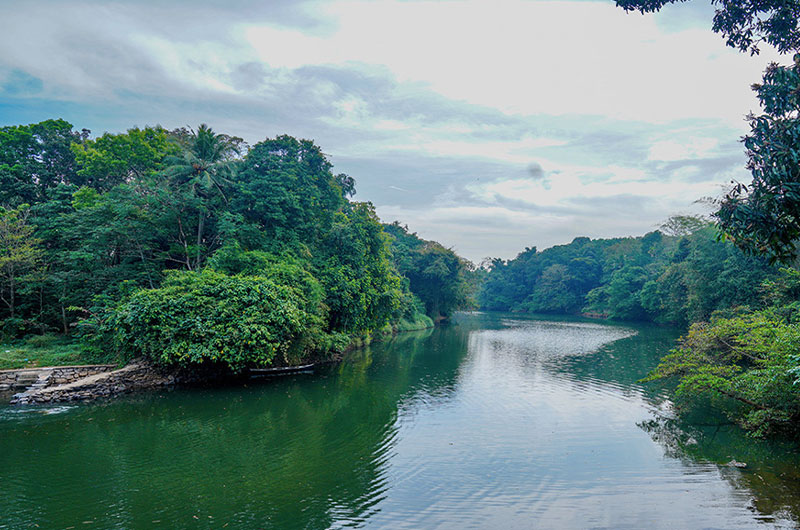
The Sacred Pamba River: Kerala’s Spiritual and Natural Lifeline
The Pamba River, also known as the Dakshina Bhageerathi, is one of the most revered rivers in Kerala, India. Flowing through the lush landscapes of the Western Ghats, the Pamba River holds immense cultural, spiritual, and ecological significance. This detailed guide explores the river’s tourism specialties, locality, nearby tourist spots, historical importance, the best times to visit, and practical travel information, offering an enriching experience for travelers.
1. Overview of the Pamba River
1.1 Geographic Location and Course
- Origin: The Pamba River originates from the Pulachimalai Hill in the Western Ghats.
- Course: It flows westward through the Pathanamthitta district, eventually emptying into the Vembanad Lake.
- Length: The Pamba River stretches approximately 176 kilometers, making it the third-longest river in Kerala.
1.2 Importance and Significance
- Ecological Impact: The river supports diverse ecosystems and is a crucial water source for irrigation, drinking, and industrial purposes.
- Cultural Impact: The Pamba River is intrinsically linked to the Sabarimala pilgrimage, one of the largest annual pilgrimages in the world.
2. Tourism Specialty
2.1 Spiritual Significance
- Sabarimala Temple: The river is central to the Sabarimala pilgrimage, where millions of devotees take a holy dip in the river before ascending to the temple of Lord Ayyappa.
- Aranmula Parthasarathy Temple: Located on the banks of the Pamba, this temple is famous for the annual Aranmula Boat Race and its unique architecture.
2.2 Natural Beauty
- Scenic Landscapes: The river flows through the Western Ghats, offering stunning views of dense forests, rolling hills, and verdant plains.
- Wildlife: The Pamba River basin is home to diverse flora and fauna, including various species of birds, fish, and other wildlife.
2.3 Adventure and Activities
- Boating and River Cruises: Visitors can enjoy tranquil boat rides and cruises, exploring the river’s serene beauty and surrounding landscapes.
- Trekking: The surrounding hills and forests offer excellent trekking opportunities for adventure enthusiasts.
3. Locality and Major Cities
3.1 Key Cities Along the Pamba
- Pathanamthitta: The district headquarters, Pathanamthitta is a cultural and administrative hub with numerous temples and religious sites.
- Chengannur: Known for its historical significance and temples, Chengannur is another key town along the Pamba River.
3.2 Nearby Tourist Spots
- Perunthenaruvi Waterfalls: A scenic waterfall located on the Pamba River, ideal for picnics and nature walks.
- Aranmula: Famous for the Aranmula Boat Race and the Parthasarathy Temple, this village offers a unique cultural experience.
- Sabarimala: One of the most significant pilgrimage sites in India, attracting millions of devotees annually.
4. History of the Pamba River
4.1 Ancient Significance
- Mythological Connections: The Pamba River is associated with various legends and myths, particularly the story of Lord Ayyappa and his connection to the Sabarimala Temple.
- Historical References: The river has been mentioned in ancient texts and scriptures, highlighting its importance in regional culture and spirituality.
4.2 Medieval and Modern History
- Medieval Period: During the medieval period, the Pamba River played a crucial role in supporting agriculture and settlements along its banks.
- Colonial Era and Post-Independence: The river continued to be significant for irrigation and transportation during the colonial period. Post-independence, it has become a focus for conservation efforts and tourism development.
5. Best Time to Visit
5.1 Ideal Seasons
- Winter (November to February): The weather is cool and pleasant, making it the best time to visit for outdoor activities and pilgrimages.
- Summer (March to May): The weather can be quite hot, but early mornings and late evenings are still enjoyable for sightseeing and river activities.
- Monsoon (June to October): The river experiences increased flow and can be prone to flooding during the monsoon season. While the lush greenery is attractive, travel might be challenging due to heavy rains.
5.2 Special Events
- Sabarimala Pilgrimage: Held annually from November to January, this pilgrimage attracts millions of devotees, who take a holy dip in the Pamba River.
- Aranmula Boat Race: Held during the Onam festival in August/September, this boat race is a major cultural event on the Pamba River.
6. Nearby Restaurants and Hotels
6.1 Restaurants
- Vazhiyorakkada Restaurant: Known for its traditional Kerala cuisine, this restaurant offers a variety of delicious dishes.
- Mannil Regency Restaurant: Located in Pathanamthitta, this restaurant serves both North and South Indian cuisine, known for its hospitality and quality food.
- Chakara Restaurant: Situated in Chengannur, this restaurant offers a wide range of Kerala delicacies, focusing on fresh and local ingredients.
6.2 Hotels
- Hotel Park Residency: A comfortable and affordable hotel located in Pathanamthitta, offering modern amenities and easy access to local attractions.
- Club 7 Hotel: Situated in Chengannur, this hotel provides a pleasant stay with well-appointed rooms and excellent service.
- Sabarigiri Hotel: Located near Sabarimala, this hotel caters to pilgrims, providing basic accommodations and necessary facilities for a comfortable stay.
Conclusion
The Pamba River, with its deep cultural, spiritual, and natural significance, provides a unique destination for travelers exploring Kerala. From its serene landscapes and rich history to its vibrant festivals and spiritual importance, the Pamba River offers diverse experiences for visitors. Whether you are seeking spiritual solace, adventure, or a deeper connection with nature, the Pamba River promises a memorable and enriching journey through one of India’s most sacred waterways.
